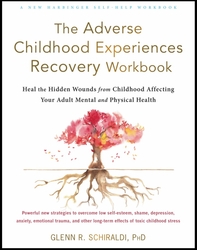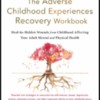A recent blog explained that adverse childhood experiences (ACEs) cause a very wide range of troubling psychological and medical symptoms ranging from anxiety, depression, and PTSD to heart disease and sleep problems. Dysregulated stress arousal—arousal that is stuck on too high or too low—is at the center of the ACEs/ health outcomes link. That is, ACEs lead to dysregulated stress, which in turn leads to stress-related symptoms.
An important first step to healing the suffering caused by toxic childhood stress is to break the ACEs/health outcomes link by returning stress arousal to appropriate levels. The window of stress arousal that is neither too high nor too low is called the resilient zone. In this zone, key regions of the brain—regions that enable us to speak, reason, cope well with present stressors, and feel connected to ourselves, our bodies, and our emotions—are all on line.
In the resilient zone, a person is also best equipped to process troubling memories, put words to them, and gain a sense that the memory is settled, completed, and in the past. So returning to the resilient zone not only improves mood and the ability to navigate everyday challenges but also facilitates healing. (NOTE: At this point in the healing journey we are only preparing the nervous system to process traumatic memories, but not yet attempting to directly modify those memories.)
Traditional Western psychology tries to tame the stress from traumatic memories with words and logic. However, much of overwhelming traumatic memories, particularly those implanted in the early years of life before the verbal/thinking left-brain is fully developed, reside in the non-verbal right brain, with its strong connections to the emotional and survival regions of the brain. Dr. Stephen Porges has explained that bodily calmness is transmitted to the brain by the vagus nerve. In response, the various regions of the brain calm down and function optimally.
Brilliant pioneering theorists and clinicians like Drs. Pat Ogden, Bessel van der Kolk, and Peter Levine have developed healing “bottom-up’ strategies that first calm the body in order to calm and reset the brain. These strategies return arousal to the resilient zone so that we can again feel whole, rewire the neural pathways that keep the brain on high alert, and at some future time put words to unspoken memories and settle them.
Here is a sampling of these very effective strategies. The bottom-up strategies all involve tracking, which is intently focusing on what is happening in the body. Tracking effectively and quickly helps to calm the body and brain.
Kneading
- Place a hand over the opposite wrist. Track what it feels like to experiment with different ways to squeeze your wrist—soft or firm, deep or shallow, soothing or mechanical, fast or slow.
- When you find the way that feels good to you, slide your hand up your forearm about an inch. Squeeze and track. Release and track.
- Continue to move your hand up and down your forearm, an inch or so at a time—at each point squeezing and tracking, releasing and tracking. Really pay attention to the sensations in your arm each time you squeeze and release. For example, notice the sensations on your skin…and deep in your arm. Take your time.
- Once your hand has moved up your forearm and back down, pause to track the effect on your body from doing this exercise.
- First, track what the arm that you squeezed feels like.
- Then notice what the hand that squeezed your arm feels like. Did the tensing and relaxing make that hand relax somewhat?
- Does one arm feel calmer than the other?
- Does your breathing feel a little slower?
- Are your muscles a bit more relaxed?
- What place in your body feels the most relaxed?
- Overall, do you feel a bit calmer?
Whatever your notice is okay. The process of simply tracking is beneficial.
Movement
Many bottom-up strategies involve movement, which releases the pent up energy of the stress response and allows high arousal to return to the resilient zone. Movement also reverses the frozen, numb, or collapsed state of low arousal. (Recall that arousal that is too low can result either when chronic stress leads to exhaustion or when attempts to fight or flee from overwhelming stress are thwarted—such as when one is held down during abuse.) Here’s another bottom up strategy that involves movement.
- In a standing position, slowly and gently raise your arms skyward as you breathe in. As you breathe out, slowly return your arms to your sides. Notice what you sense in your body as you move—such as the stretch in some areas and tension in others as your raise your arms, the release of muscle tension as you lower them, or the warmth from increased blood flow to your shoulders, arms, and hands.
- Expand your awareness as you track what has happened in the rest of your body. Perhaps you notice slowed breathing or heart rate. Perhaps you notice a settling feeling in your gut or throat. Perhaps you just feel a bit calmer.
- Place one foot behind the other, shoulder width apart, with the back foot turned outward to form a firm base. From the strength of your core and legs, push slowly and firmly against a wall. Track how it feels to move forcefully and confidently, both in your body and emotionally.
- Sit down. Take a few moments to scan your entire body and simply notice what you sense now. Notice a place in your body that feels calm, or at least neutral. The spot might be an elbow, a finger, a toe, or a spot between the breastbone and bottom of the neck. Focus on that long enough to realize that stress is not taking over your entire body.
Conclusion
There is great hope for healing the hidden wounds from ACEs. Practice these foundational strategies for at least a week or two because they become more effective with repetition. Remember, the calming skills you are acquiring begin the healing journey. They will help you reduce distress in the present and later help you deal with distressing childhood memories.
In the next blog we’ll explore ways to manage strong, distressing emotions—such as anxiety and sadness—that maintain and even worsen dysregulated stress.
Reference
Schiraldi, G. R. (2021). The Adverse Childhood Experiences Recovery Workbook. Oakland, CA: New Harbinger.
Notes:
This article first appeared on Psychology Today blog, November 8, 2021.
Photo Credits: Mathew Thomas/Pexels; Matilda Wormwood/Pexels
About the Author
Glenn R. Schiraldi, PhD, has served on the stress management faculties at The Pentagon, the International Critical Incident Stress Foundation, and the University of Maryland, where he received the Outstanding Teacher Award in addition to other teaching/service awards. His fourteen books on stress-related topics have been translated into seventeen languages, and include The Adverse Childhood Experiences Recovery Workbook, The Self-Esteem Workbook. The Resilience Workbook, and The Post-Traumatic Stress Disorder Sourcebook. The founder of Resilience Training International (www.ResilienceFirst.com), he has trained laypersons, emergency responders, and clinicians around the world on the diverse aspects of stress, trauma, and resilience.





Comments (0)